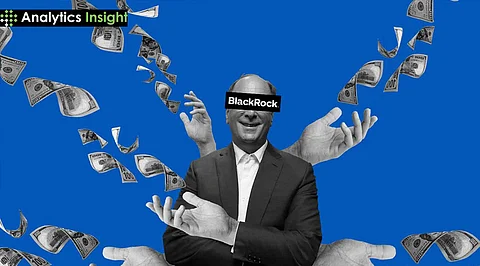

Despite changes in the financial system, market fluctuations continue to pose significant challenges for investors. BlackRock, the world’s largest asset manager with nearly $11 trillion in assets, is focused on developing strategies to navigate these difficult situations.
The company emphasizes maintaining robust and diversified investments while effectively managing its assets. Economic changes are expected to persist until 2025. Market volatility refers to the degree to which stock prices fluctuate in relation to expected returns. Higher volatility typically indicates a riskier investment environment, often resulting from factors such as economic reports, global events, and shifts in government policies.
Understanding these elements is crucial for investors preparing for the market ups and downs expected in 2025 to ensure effective portfolio management.
Inflation is a significant driver of market volatility, and its impact is expected to persist. According to BlackRock's Kate Moore, "sticky" inflation may remain a challenge until 2025.
Does not respond well to monetary policy
Increases uncertainty in financial markets
May alter traditional stock and bond correlations
With inflation on the rise, some long-standing investment strategies may need to be reevaluated. BlackRock suggests that:
Inflationary pressures could disrupt traditional patterns of stock and bond correlations
Bonds may not provide a safe haven during stock market declines if inflation continues to climb
To navigate this changing landscape, BlackRock is exploring alternative investment options that transcend traditional asset classes. Some potential alternatives include:
Real assets (e.g., real estate, infrastructure)
Alternative fixed income (e.g., private credit, asset-backed securities)
Diversified multi-asset strategies
The global inflation rate is expected to reach 3.6% by 2025, up from 3.2% in 2022 (Source: IMF).
The US inflation rate is projected to average 2.5% from 2023 to 2025, above the Federal Reserve's 2% target (Source: Federal Reserve).
The global bond market is expected to reach $128 trillion by 2025, with alternative fixed-income strategies becoming increasingly popular (Source: SIFMA).
BlackRock's primary diversification strategy involves dispersing investments across asset classes, sectors, and geographies to minimize risk and maximize returns. As the investment landscape evolves, BlackRock emphasizes the importance of alternative investments in 2025.
Alternative assets, including real estate, commodities, and cryptocurrencies like Bitcoin, can provide diversification benefits by exhibiting different market behaviors than traditional stocks and bonds. This makes them attractive during periods of economic uncertainty.
Certain alternative assets, like gold, have historically served as safe-havens during economic downturns. As investors navigate the challenges of 2025, incorporating alternative investments into their portfolios may help mitigate risk and capture potential returns.
The global alternative investment market is projected to reach $14.4 trillion by 2025. Alternative assets accounted for 12% of global investment portfolios in 2022, up from 8% in 2018.
Other than diversification, BlackRock promotes tactical asset management. It means that how a portfolio is divided depends on what is happening in the market right now rather than only sticking to a long-term plan. Being flexible and quick to respond to changing economic signs helps investors deal with market ups and downs.
For example, BlackRock's Tactical Opportunities Fund shows this type of strategy. The fund will focus on short-term market inefficiencies while controlling risks through targeted hedges. For instance, long-duration bonds may be reduced to reduce the sensitivity of risks as interest rates rise, and more positions may be taken on short-term securities.
To forecast market movements, BlackRock relies on macroeconomic indicators, focusing on key drivers such as GDP growth rates, employment data, and consumer spending patterns. These metrics will inform BlackRock's investment decisions in 2025, identifying areas of potential growth.
A critical aspect of BlackRock's analysis is the divergent performance of the US and European economies. The US economy appears robust, with strong local investment and growth prospects. The US GDP is projected to grow at a rate of 2.3% in 2025, outpacing Europe's expected growth rate of 1.5% (Source: IMF). In contrast, Europe faces challenges, including low productivity and uncertain consumer spending.
This disparity presents opportunities for investors to capitalize on US assets, while exercising caution when investing in Europe. The S&P 500 is expected to continue its upward trend, with a projected growth rate of 8-10% in 2025 (Source: BlackRock). Meanwhile, the Euro Stoxx 50 is expected to experience more modest growth, with a projected increase of 4-6% in 2025 (Source: Bloomberg).
By closely monitoring these macroeconomic trends, BlackRock aims to optimize investment strategies and navigate the complexities of the global economy in 2025.
The outlook is obscured as 2025 draws near. BlackRock acknowledges that, with ever greater consensus positioning by investors, volatility may be more pronounced in the short term. Large cash balances on money market funds indicate that several investors are preparing for a potential decline.
BlackRock protects against this uncertainty by encouraging proactive investment. People can better protect themselves from market swings through a diversified portfolio, including alternative assets coupled with tactical management strategies.
BlackRock has developed strategies to address market volatility in 2025, focusing on diversification, tactical asset management, and responsiveness to economic indicators. As inflationary pressures increase and traditional correlations between stocks and bonds evolve, investors need to adjust their approaches to effectively protect their portfolios.
BlackRock aims to prepare investors for an unpredictable financial future by focusing on resilience and adaptability. Although the journey may be challenging, there are still growth opportunities available with the right strategies implemented.
